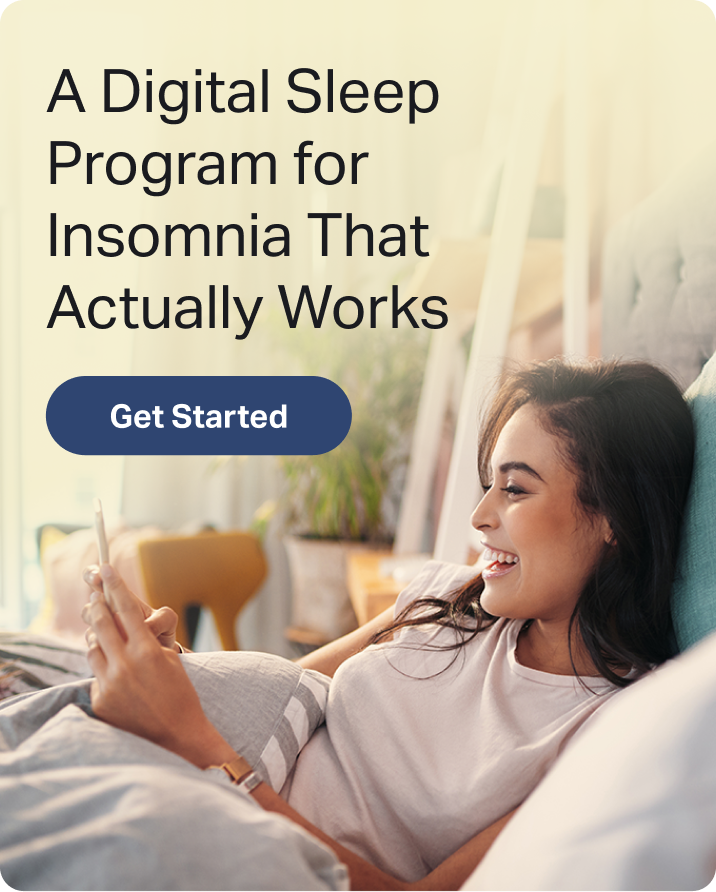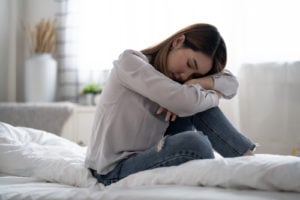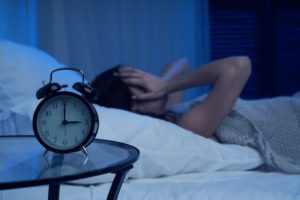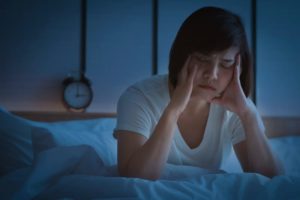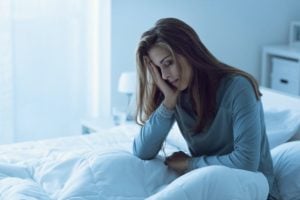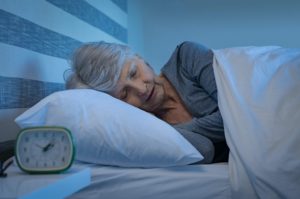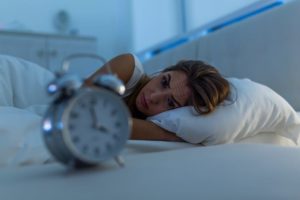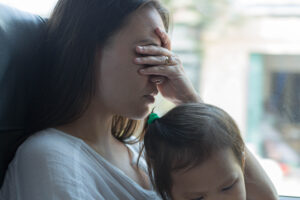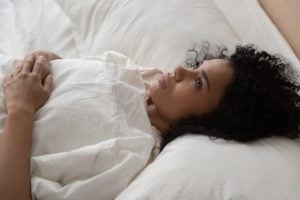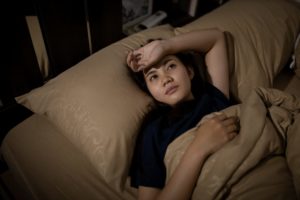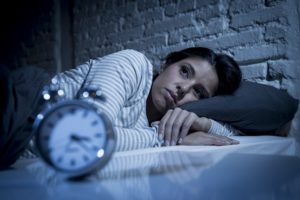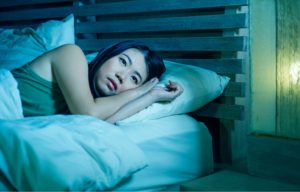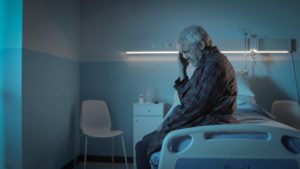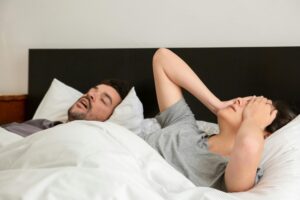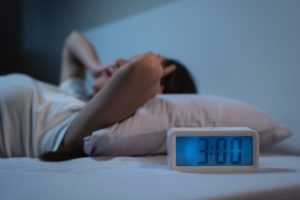When you buy through our links, we may earn a commission. Products or services may be offered by an affiliated entity. Learn more.
Treatments for Insomnia
Insomnia is a disorder characterized by persistent difficulty with sleep onset, maintenance, consolidation, or quality. People who have insomnia struggle with sleep despite adequate opportunities for sleep, and also experience excessive daytime sleepiness and other dysfunctions when they are awake. Based on various studies and surveys, today’s sleep experts estimate 10% to 30% of adults live with some form of insomnia.
Treating insomnia typically involves sleep-inducing medication, cognitive behavioral therapy for insomnia (CBT-I), or a combination of both of these measures. Positive lifestyle changes may alleviate symptoms for some people, as well. There is no “best treatment for insomnia.” Specific treatment recommendations depend on whether the patient has short-term or chronic insomnia, as well as their medical history.
Struggling to Stay Awake? Take an At-Home Sleep Test

our partner at sleepdoctor.com
LAST CHANCE: 20% off Home Sleep Tests
Buy Now“Truly grateful for this home sleep test. Fair pricing and improved my sleep!”
Dawn G. – Verified Tester
Diagnosing Insomnia
Before insomnia treatment can begin, you should meet with your doctor or another credentialed physician to discuss symptoms and receive a diagnosis. Diagnostic criteria for insomnia includes difficulty initiating or maintaining sleep, waking up earlier than desired, and resistance going to bed at a reasonable hour. These symptoms must occur for at least 3 months despite adequate opportunities for sleep on a nightly basis. Additionally, you must experience one or more of the following daytime symptoms to receive an insomnia diagnosis:
- Fatigue or malaise
- Impairments with memory, concentration, or attention
- Negative impacts on social, family, occupational, or academic performance
- Irritability or disturbed mood
- Excessive daytime sleepiness
- Hyperactivity, impulsivity, aggression, or other behavioral problems
- Increased risk for errors and accidents
- Lack of motivation or energy
An insomnia diagnosis will include a standard medical exam and questionnaire. These procedures allow your doctor to determine whether the insomnia is an isolated condition, or if you’re experiencing insomnia symptoms due to an underlying disease or medical disorder. Documenting your nightly sleep patterns, waking episodes, and alcohol and caffeine intake in a sleep diary for one to two weeks prior to this appointment can help your doctor with the diagnosis.
Depending on the outcomes of this initial exam and questionnaire, your doctor may recommend an overnight sleep study conducted either at home or a dedicated sleep center. These tests may also be conducted during the day to measure your sleep latency, or how long it takes to fall asleep, and how you feel and perform during the day. Additionally, your doctor may prescribe actigraphy, a monitoring test that requires you to wear a body sensor while you sleep for up to two weeks. Blood tests can also be prescribed to rule out underlying medical conditions that cause insomnia symptoms.
Cognitive Behavioral Therapy for Insomnia
Treating insomnia includes two main objectives: improving sleep quality and duration, and reducing associated daytime impairments.
CBT-I is considered a first-line treatment for insomnia because it does not carry the health risks associated with sleep medication. In most cases, CBT-I is provided by a licensed psychologist who has received training for this type of treatment. CBT-I focuses on pinpointing the anxieties people with insomnia often have about sleep, and then replacing these anxieties with healthier beliefs and attitudes. Additionally, this type of therapy may consist of one or more of the following components:
- Sleep education and hygiene: Educating patients about healthy sleep patterns and lifestyle habits can help them understand why they experience insomnia symptoms. Specifically, sleep hygiene focuses on increasing behaviors that improve sleep quality and quantity while eliminating behaviors that cause sleep problems. For example, a therapist may suggest falling asleep and getting up at the same times each day while discouraging alcohol and caffeine consumption in the hours leading up to bedtime.
- Stimulus control: Many people with insomnia experience anxiety at the mere prospect of falling asleep, which can exacerbate and prolong their symptoms. Stimulus control involves a series of steps you can take to reduce these anxieties and develop a positive relationship with your sleep area. These include lying down only when you feel tired, using a bed only for sleep and sex, and setting an alarm for the same time each morning. CBT-i practitioners often encourage sleepers to get up if they are unable to fall asleep after 10 minutes of lying in bed, and to only return to bed when they feel tired. Stimulus control also discourages daytime napping.
- Sleep restriction and compression: These two methods aim to improve sleep quality and quantity by reducing the amount of time a person lies in bed. A CBT-i practitioner can use records from a patient’s sleep diary to determine how much time they sleep each night compared to the amount of time they lie in bed awake. Sleep restriction involves a sharp curtailing of time in bed while sleep compression is a more gradual process, but both techniques are intended to achieve the same goal: less time in bed awake each night.
- Relaxation: Sleep experts have identified a handful of relaxation techniques that can benefit people with insomnia. These include breathing exercises, muscle relaxation, and meditation. Biofeedback – which helps you control different bodily functions based on your blood pressure, breathing and heart rates, and other metrics – can also be effective for reducing insomnia symptoms and improving sleep.
The number of qualified behavioral sleep medicine therapists in the U.S. is fairly limited. You can locate CBT-i providers and verify their credentials through certain professional organizations, including the American Psychological Association, American Board of Sleep Medicine, Association of Behavioral and Cognitive Therapies, and Society of Behavioral Sleep Medicine.
Medications for Insomnia
Before taking any medication for insomnia, be sure to consult with your doctor or another credentialed physician. For many people, medication is a last resort after stimulus control, relaxation techniques, and other CBT-i methods have not been effective at improving their sleep. Medications for insomnia fall into several different categories, including:
- Benzodiazepines: Known as BZD for short, benzodiazepines are a class of psychoactive drugs. A total of five BZDs have been approved for treating insomnia by the U.S. Food and Drug Administration, including those with short-, intermediate-, and long-acting effects. However, BZDs are normally not recommended for long-term insomnia treatment because there is a high potential for abuse and dependence; all five insomnia BZDs are classified as Schedule IV controlled substances under the U.S. Drug Enforcement Administration (DEA). Additionally, people who take these drugs often develop a tolerance for their sedative effects.
- Nonbenzodiazepines: This class of drugs – known as Z drugs for short – was created to provide the same relief as BZDs while reducing the adverse effects and abuse potential. That said, Z drugs (like Ambien) also require a prescription and the DEA has classified them as Schedule IV controlled substances.
- Melatonin agonist: In the evening as natural light begins to fade, the pineal gland of your brain produces melatonin, a hormone that induces feelings of sleepiness and relaxation. The medication known as ramelteon acts as a melatonin receptor agonist, and can be used to treat insomnia related to sleep onset, or falling asleep. The effects of ramelteon tend to be less severe compared to BZDs and Z drugs, though patients often experience dizziness, nausea, and fatigue.
- Orexin receptor antagonist: Orexins are neurotransmitters in the body that regulate feelings of sleepiness and wakefulness. The drug known as suvorexant acts as an orexin receptor antagonist, and can be used as a sleep onset or sleep maintenance insomnia treatment. Suvorexant is a Schedule IV controlled substance.
- Off-label treatments: Certain medications primarily intended to treat other conditions may also reduce insomnia symptoms. These include certain antidepressants and antipsychotic medications. They may be prescribed in some cases.
- Over-the-counter medications: Certain over-the-counter antihistamines have sedating properties and can serve as sleep aids. Melatonin supplements intended to help balance the levels of melatonin in your body are also available. While they don’t require prescriptions, always speak to a doctor before trying an over-the-counter option.
Lastly, a word about natural treatment for insomnia options. Historically people have used herbal supplements such as valerian and kava to reduce insomnia symptoms and improve their sleep. Some recent findings indicate these supplements may not be as safe as once thought. Both valerian and kava have been linked to adverse side effects, and are generally not recommended to treat insomnia.

Still have questions? Ask our community!
Join our Sleep Care Community — a trusted hub of sleep health professionals, product specialists, and people just like you. Whether you need expert sleep advice for your insomnia or you’re searching for the perfect mattress, we’ve got you covered. Get personalized guidance from the experts who know sleep best.
References
8 Sources
-
American Academy of Sleep Medicine. (2014). The International Classification of Sleep Disorders – Third Edition (ICSD-3). Darien, IL.
https://aasm.org/ -
Bhaskar, S., Hemavathy, D., & Prasad, S. (2016). Prevalence of chronic insomnia in adult patients and its correlation with medical comorbidities. Journal of Family Medicine and Primary Care, 5(4), 780–784.
https://pubmed.ncbi.nlm.nih.gov/28348990/ -
National Heart, Lung, and Blood Institute. (2022, March 24). Sleep studies., Retrieved September 9, 2020, from
https://www.nhlbi.nih.gov/health/sleep-studies -
Lie, J., Tu, K., Shen, D., & Wong, B. (2015). Pharmacological Treatment of Insomnia. Pharmacy and Therapeutics, 40(11), 759–768.
https://www.ncbi.nlm.nih.gov/pmc/articles/PMC4634348/ -
Siebhern, A. (2019, April 21). Cognitive Behavioral Treatment for Insomnia (CBTi) Defined. Psychology Today., Retrieved September 9, 2020, from
https://www.psychologytoday.com/us/blog/sleep-health-and-wellness/201904/cognitive-behavioral-treatment-insomnia-cbti-defined -
Williams, J., Roth, A., Vatthauer, K., & McCrae, C. (2013). Cognitive Behavioral Treatment of Insomnia. Chest, 143(2), 554–565.
https://www.ncbi.nlm.nih.gov/pmc/articles/PMC4694188/ -
U.S. National Library of Medicine. (2020, August 25). Biofeedback. MedlinePlus., Retrieved September 9, 2020, from
https://medlineplus.gov/ency/article/002241.htm -
U.S. Drug Enforcement Administration. (n.d.). Drug Scheduling., Retrieved September 9, 2020, from
https://www.dea.gov/drug-scheduling





